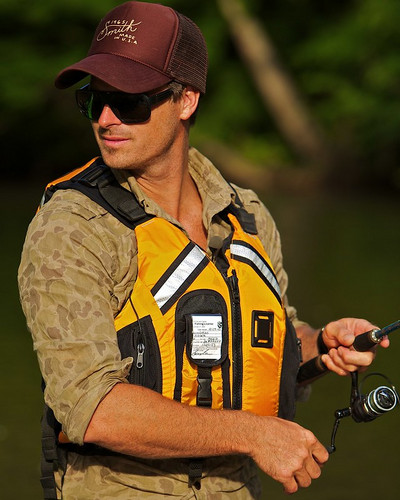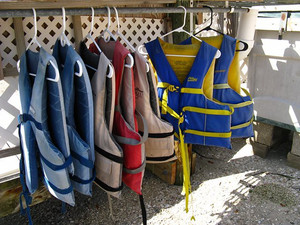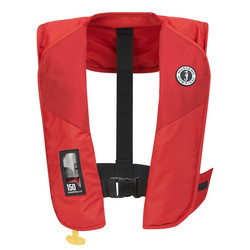Wear A Lifejacket
The Lifesaving Society’s drowning reports show that not wearing a lifejacket or personal flotation device (PFD) is a relevant factor in the majority of boating deaths. Many lives could be saved every year in Canada if lifejackets and PFDs were worn.
Lifejackets don’t work if you don’t wear them.
Some people believe they can put on their lifejacket should they find themselves in an emergency. This is not true. Emergencies happen in a split-second, and people in these situations will not have the time to put on a lifejacket.
Lifejacket vs Personal Floatation Device (PFD)
Yes there is a difference between the two devices but while but the differences make little difference to everyone in daily life. As while Lifejacket can replace a PFD the opposite is not true. Lifejackets are designed to be donned during an emergency (Ship sinking) and PFD's are designed for all day wear (out fishing all day on the lake). Which one you wear isn't as important as using it as it will only keep you floating if you have it on.

What to look for in Personal Flotation Devices
- The PFD must be approved by Transport Canada (may say TC Approved or TC followed by a number), The Canadian Coast Guard, or Fisheries and Oceans Canada.
- PFD's are not required to be orange, red, or yellow like Lifejackets, but these colours are recommended for visibility. Your PFD can be any colour you choose.
- PFD's must be appropriate sized for the person they are intended for. A four pack of universal PFD's may not meet your needs if some are children and others are larger than average. So not only the weight rating but actual ability to be worn comfortably.
- Find a PFD that fits you. You should never buy a PFD from the rack without trying it on. A comfortable fitting PFD means you are more likely to wear it all day during your activites. Put on the PFD and tighten it to a comfortable level and then place your thumbs under the shoulder straps and pull up. If you can't get your fingers in the PFD is too small if the PFD pulls up to your ears it is too large. Try different styles and brands of PFD's to find the one the best suits you!
- Look for a PFD that meets your activites. A paddling PFD sits higher and allows for wide arm movement so it can be worn in a kayak and allow for paddling. A fishing PFD may have pockets and attachment points for equipment and accessories and many have mesh in the design to keep you cool. A PFD for waterskiing is likely to have more buckles and tighter fit to ensure it stays on.
- Wear it! 79% of boating fatalities in Saskatchewan were not wearing a PFD or Lifejacket. 81% of all drownings the person was not wearing a PFD or Lifejacket. A PFD protects not only from drowning but from getting tired, or inhaling water upon sudden entry. A PFD can mean the difference between Life and Death

Caring for Your PFD/Lifejacket
- Never store a PFD wet, always dry it before storage
- Store your PFD's out of direct sunlight as the UV will over time break down the fabric
- Check your PFD for fading, wear, and tears each time you use it. If you find any of these it is time for a new PFD
- Do not dry clean or machine wash your PFD. Hand wash it with mild soap and water.
- Check the buoyancy on a regular basis by simply donning the PFD and walking into chest deep water and picking your feet up off the ground. If you float you are good to go, if you sink then the PFD is not the right one for you.

Inflatable PFD's
- Inflatable PFD's can be inflated either manually or automatically using a CO2 cartridge but must be approved by Transport Canada.
- They should only be worn by those with strong swimming abilites and weak or non-swimmers should not use them.
- They should not used in very cold water as the CO2 may not expand enough to fill the PFD.
- Are not to be used by those under 16 years of age, or weigh less than 80lbs
- Are prohibited for those operating personal watercraft and those on whitewater
- They must be inspected regularly according to the manufactures directions






